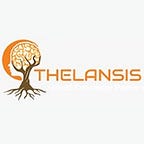Acute Kidney Injury (AKI) — Market Outlook, Epidemiology, Competitive Landscape, and Market Forecast Report — 2023 To 2033
Acute Kidney Injury (AKI) is a sudden decline in kidney function, determined by elevated serum creatinine levels (indicating impaired kidney excretion) and reduced urine output (oliguria) within a 7-day timeframe. When AKI persists for over 3 months, it is termed Chronic Kidney Disease (CKD). It’s noteworthy that AKI and CKD frequently coexist in patients with preexisting CKD. Acute Renal Failure (ARF) is a clinical syndrome characterized by the abrupt onset of kidney dysfunction, resulting in the accumulation of metabolic toxins and disturbances in fluid, electrolyte, and acid-base balance. The causes of AKI can be categorized into three groups: prerenal (due to reduced renal blood flow, often due to dehydration), intrinsic renal (stemming from kidney-related issues), and postrenal (resulting from inadequate urine drainage beyond the kidneys). In individuals with underlying chronic kidney disease, any factors, particularly dehydration, can lead to AKI alongside chronic renal impairment. Prerenal causes account for around 70% of community-acquired AKI cases. Various medications, such as angiotensin-converting enzyme inhibitors, angiotensin receptor blockers, and nonsteroidal anti-inflammatory drugs, can trigger prerenal AKI by affecting renal perfusion or glomerular filtration rate. These drugs can hinder the body’s usual responses to dehydration and may result in reduced renal function. In prerenal AKI, kidney function typically returns to normal once adequate fluid levels are restored, the underlying cause is treated, or the causative medication is discontinued. AKI classification comprises prerenal AKI, acute postrenal obstructive nephropathy, and intrinsic acute kidney diseases. Only “intrinsic” AKI represents a true kidney disease, while prerenal and postrenal AKI are outcomes of non-kidney conditions that reduce glomerular filtration rate (GFR). If prerenal and postrenal conditions persist, they can eventually lead to cellular damage in the kidneys and, consequently, intrinsic renal disease. Risk factors for AKI encompass environmental, socioeconomic, cultural, care-related, acute exposures, and patient-related factors. Clinical presentation varies based on the cause and severity of renal injury, as well as any associated conditions. Most mild to moderate AKI patients exhibit no symptoms and are identified through laboratory tests. In severe cases, patients may experience listlessness, confusion, fatigue, loss of appetite, nausea, vomiting, weight gain, or edema. Severe AKI can also manifest as oliguria (urine output less than 400 mL per day), anuria (urine output less than 100 mL per day), or normal urine volumes (nonoliguric AKI). Additional presentations may include uremic encephalopathy (characterized by a decline in mental status, asterixis, or other neurological symptoms), anemia, or bleeding due to platelet dysfunction caused by uremia. Currently, AKI diagnosis relies on an acute reduction in GFR, indicated by an abrupt increase in serum creatinine levels and a decrease in urine output within a specific timeframe. The primary treatment option is dialysis and supportive care, as no drugs are approved for AKI treatment. Typically, these patients are managed in intensive care units, often with the assistance of nephrologists.
- The estimated annual incidence of AKI is 31.7 cases per 10,000 individuals.
Thelansis’s “Acute Kidney Injury (AKI) Market Outlook, Epidemiology, Competitive Landscape, and Market Forecast Report — 2023 To 2033” covers disease overview, epidemiology, drug utilization, prescription share analysis, competitive landscape, clinical practice, regulatory landscape, patient share, market uptake, market forecast, and key market insights under the potential Acute Kidney Injury (AKI) treatment modalities options for eight major markets (USA, Germany, France, Italy, Spain, UK, Japan, and China).
KOLs insights of Acute Kidney Injury (AKI) across 8 MM market from the centre of Excellence/ Public/ Private hospitals participated in the study. Insights around current treatment landscape, epidemiology, clinical characteristics, future treatment paradigm, and Unmet needs.
Acute Kidney Injury (AKI) Market Forecast Patient Based Forecast Model (MS. Excel Based Automated Dashboard), which Data Inputs with sourcing, Market Event, and Product Event, Country specific Forecast Model, Market uptake and patient share uptake, Attribute Analysis, Analog Analysis, Disease burden, and pricing scenario, Summary, and Insights.
Thelansis Competitive Intelligence (CI) practice has been established based on a deep understanding of the pharma/biotech business environment to provide an optimized support system to all levels of the decision-making process. It enables business leaders in forward-thinking and proactive decision-making. Thelansis supports scientific and commercial teams in seamless CI support by creating an AI/ ML-based technology-driven platform that manages the data flow from primary and secondary sources.
